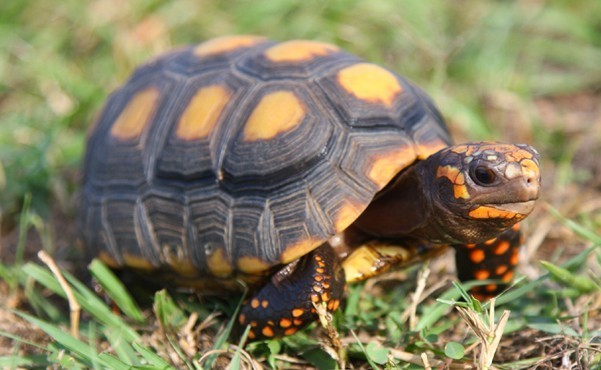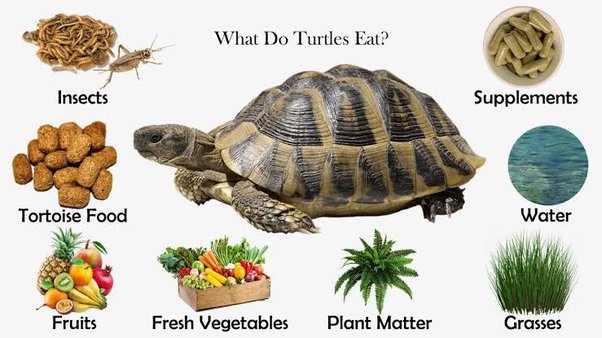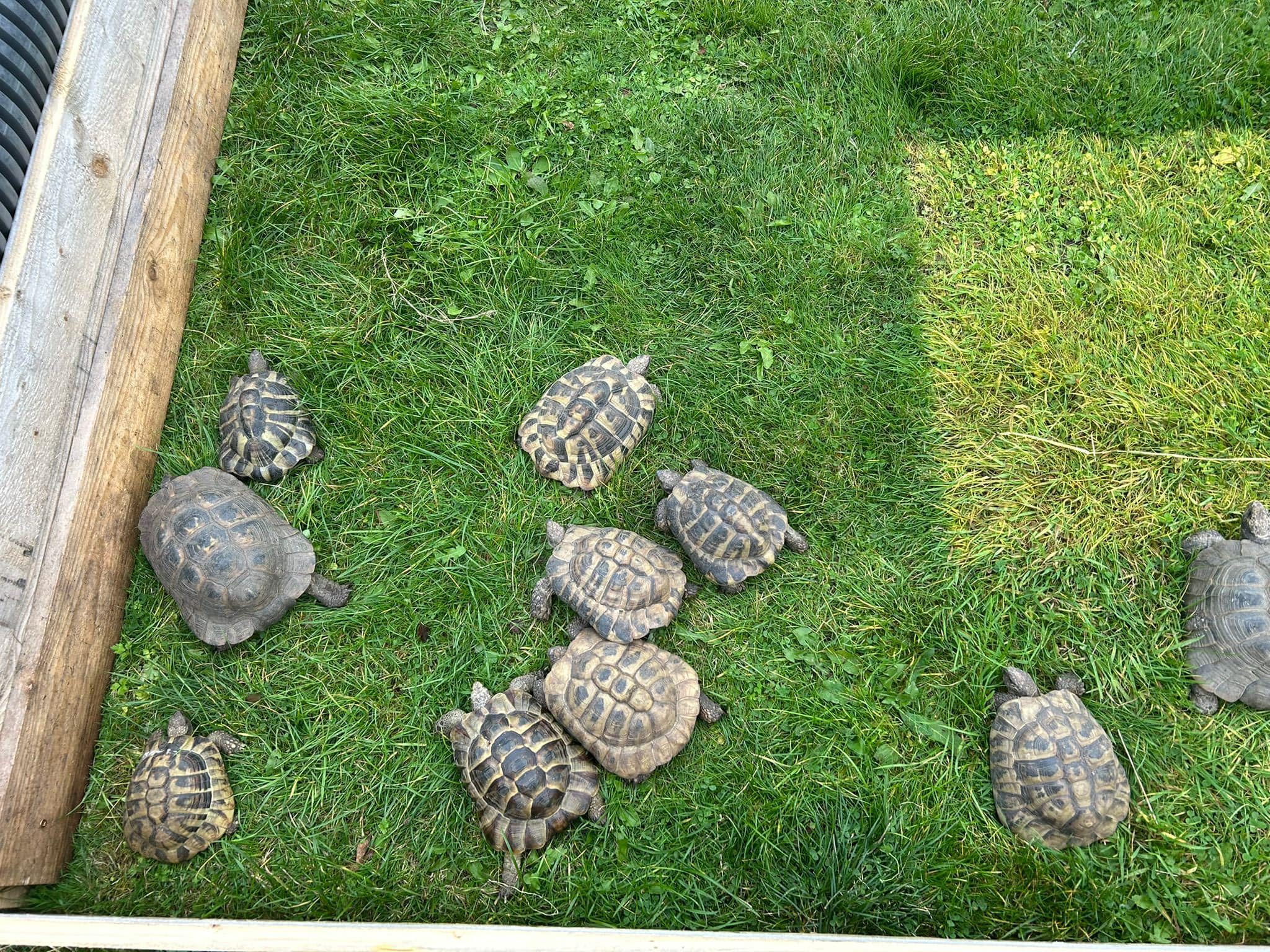insert picture
Environment
Tortoise should be housed in large enclosures. You can house them securely in a built enclosure to match the tortoise, or in a secure outdoor enclosure with outdoor heating and lighting when adults. In any case, the enclosure must be secure to prevent escape and free from hazards that might cause injuries, including other pets or children.
Each Tortoise species needs its own sized enclosure. When keeping a couple of Tortoises together as babies that’s fine but as they get older the minimum space would need to be adapted, so both Tortoises have room to move freely in their enclosure.
Russian Tortoises
-For babies, start with 2ft by 3ft.
-Minimum indoor enclosure is 6ft by 3ft.
-Minimum outdoor enclosure is 8ft by 8ft.
Hermann Tortoises
-For babies, start with 2ft by 3ft.
-Minimum indoor enclosure is 8ft by 4ft.
-The outdoor enclosure should be 8ft by 8ft.
Greek(Spur-thighed)Tortoises
-For babies, start with 2ft by 3 ft.
-Minimum indoor enclosure is 8ft by 4ft.
-An outdoor enclosure should be 8ft by 8ft.
Marginated Tortoises
-For babies, start with 2ft by 3ft.
-Minimum indoor enclosure is 8ft by 4ft.
-The outdoor enclosure should be 8ft by 8ft.
Red-footed Tortoises
– For babies, start with a 2ft by 3ft enclosure.
-For adults, a minimum indoor space is 3ft by 6ft.
-Minimum outdoor space is 6ft by 8ft.
Yellow-footed Tortoises
-For babies, start with a 2ft by 3ft enclosure.
-A large adult needs an enclosure that’s 8ft by 4ft.
-Minimum outdoor space is 6ft by 10ft.
Indian Star Tortoises
-For babies, start with 3ft by 2ft.
-Fully grown indoor minimum size is 6ft 3ft.
-Minimum outdoor space is 6ft by 8ft.
Egyptian Tortoises
-For babies, start with 3ft by 2ft.
-Minimum indoor space for adults is 8ft by 4ft.
-Minimum outdoor space for adults is 8ft by 8ft.
Leopard Tortoises
-For babies, start with 4ft by 2ft.
-Minimum indoor space for adults is 8ft by 4ft.
-Minimum outdoor space is 8ft by 8ft.
Desert Tortoises
-For babies, start with 3ft by 2ft.
– Minimum indoor enclosure space is 10ft by 12ft.
-Minimum outdoor space is 15ft by 20ft.
Pancake Tortoises
-For babies, start with 3ft by 2ft.
-Minimum indoor enclosure space is 6ft by 4ft.
-Minimum outdoor space is 6ft by 4ft.
Sulcata Tortoises
-For babies, start with 2ft by 3ft.
-Minimum indoor enclosure size for an adult is 6ft by 6ft.
-Minimum outdoor enclosure size for an adult is 10ft by 20ft.
Galapagos Tortoises
-For babies, start with 8ft by 4ft.
-Minimum indoor enclosure size for an adult is 20ft by 20ft.
-Minimum outdoor enclosure size for an adult is 70ft by 70ft.
Temperature
Reptiles are ectothermic, meaning they use their environment to warm up and cool down. A core aspect of reptile keeping is maintaining a thermogradient. This involves creating a basking area, where the animal can absorb warmth, while leaving another area cool to allow the Tortoise to choose the level of heat they want.
The Russian Tortoises temperature for the basking area should be 21c to 25c.
For Hermann’s Tortoises the basking area temperature should be 32c to 40c.
The Greek Tortoises the basking area should be 23c to 32c in the day and 18c to 32c at night.
For Marginated Tortoises the basking area should be 32c and in the cool end is 22-25c.
For Red-footed Tortoises the temperature in their enclosure should be 28-34c and the cool side should be 20-24c.
For Yellow-footed Tortoises the basking area temperature should be 29-32c and the cool end should be 21-24c.
Indian star Tortoises the basking area should be 32-38c during the day and 20c at night.
Egyptian Tortoise’s basking area temperature should be 35c and the cool side 22-25c.
For Leopard Tortoises basking area is 31-34c and in the cool end it should be 26c.
The Desert Tortoises basking area is 21-32c during the day and 21-24c during the night.
For Pancake Tortoises basking area is 38-42c and on the cool side is 24-30c.
The Sulcata Tortoises basking area is 38-43c during the day and 27-32 during the night.
The Galapagos Domed Tortoises temperature should be kept at 25-32c.
The Galapagos Saddleback Tortoises temperature should be kept at 25-32c.
Light
Reptiles use natural daylight to set their day and night patterns. Sunlight contains visible light and ultraviolet light (UV). One part of UV is called UVB, which allows reptiles to make vitamin D3, vital for them to store and use calcium. Another part is UVA, which is important for them to see their world in full colour.
Cleaning



